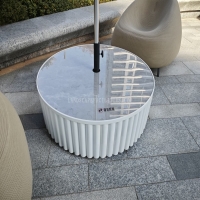Welcome to the website for landscape facilities products and knowledge.
What are the best practices for spacing landscape tables to comply with ADA guidelines?
Ensuring that landscape tables are accessible to all users, including those with disabilities, is a critical aspect of inclusive design. The Americans with Disabilities Act (ADA) provides guidelines to help designers create tables that are easy to navigate and understand. Here are the best practices for spacing landscape tables to comply with ADA guidelines:
1. Adequate Cell Padding: Ensure sufficient padding within table cells to prevent text from appearing cramped. A minimum of 0.5 inches (or 12.7 mm) is recommended to improve readability.
2. Clear Row and Column Spacing: Maintain consistent spacing between rows and columns. This helps users distinguish between different sections of the table, especially those using screen readers.
3. High Contrast Borders: Use borders with high contrast colors to define table boundaries clearly. This aids users with visual impairments in identifying table structures.
4. Logical Tab Order: Design tables with a logical tab order to ensure keyboard users can navigate through cells sequentially without confusion.
5. Avoid Merged Cells: Merged cells can complicate screen reader interpretation. If merging is necessary, provide clear labels and alternative text to explain the structure.
By following these practices, you can create landscape tables that are not only ADA-compliant but also user-friendly for everyone. Prioritizing accessibility in your designs fosters inclusivity and ensures a better experience for all users.
Related search:

Recommendation
Round metal tube border design table with tempered glass or granite countertop on the top.